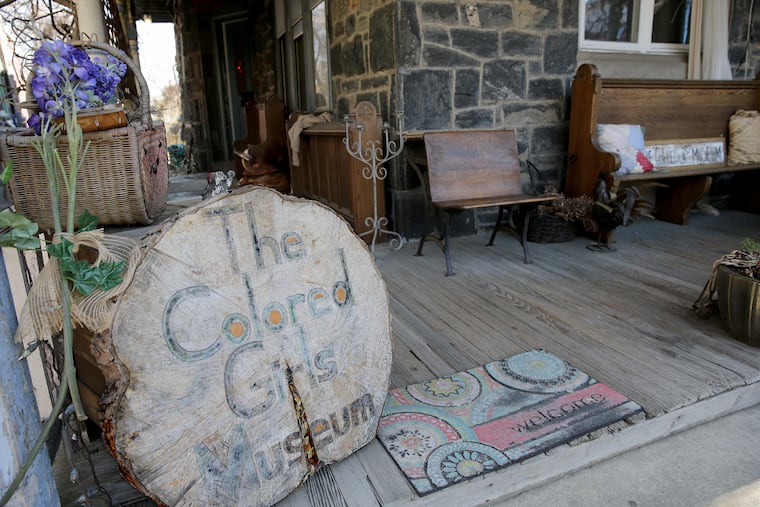Two Black Philly museums launch capital campaign to ‘defend Black memory’
“Whereas many of our larger institutions ... are talking about equity, justice, and social justice, and Black Lives Matter, organizations like The Colored Girls Museum and Paul Robeson House were doing this work before, and we’ll be doing this work after.”

When Vernoca Michael set fire to the mortgage of Paul Robeson House, a packed gathering of supporters cried out to celebrate. Many in the audience that afternoon, on a Saturday in late January, were volunteers, like Michael, the executive director. This was a milestone they had spent years working for.
Guests at their mortgage-burning party lingered after the ceremony, holding conversation over cake and sparkling cider. The museum’s cultural workers explained to guests that their fund-raising was ongoing — as they were still working to renovate the 109-year-old West Philadelphia space.
“So this was to be a banner summer for us,” Michael said in an interview this week. “And here comes the pandemic.”
Feeling the economic pressure of the coronavirus pandemic, this Black cultural institution and The Colored Girls Museum have launched a joint capital campaign on GoFundMe. They are aiming to raise $100,000, the bulk of which would support renovations for the houses that hold them.
The Colored Girls Museum, located in Germantown and offering arts and cultural exhibits often with a focus on Black women, is seeking $37,000 to finance structural upgrades to its porch and a contract with a professional cleaning service. Paul Robeson House is seeking $43,000 for a kitchen remodel and renovations to make the building more accessible. The lion’s share of the rest would go toward supplies to keep the spaces sanitary.
The Colored Girls Museum has received $9,000 from the Philadelphia Cultural Fund, and will receive another $5,000 in emergency COVID-19 funding. The Paul Robeson House has not received any support from the fund this year.
Vashti DuBois, executive director of The Colored Girls Museum, explained that the museum just paid salaries to its three employees for the first time this year. They do not have professional cleaners on site, as other institutions may. The Colored Girls Museum, she said, also doesn’t have the donor bases that larger cultural institutions do.
“We’re already operating low to the ground. We’re already doing as much as we can with what we have, which, unfortunately, is the story of institutions like our own,” said DuBois, who said she’s observed that new Black organizations often wait for years before they can successfully attract grant funding. “It’s miraculous that we got this far … People want to see proof of concept. But, what is the likelihood of ordinary folk being able to just sustain something like this?”
The Colored Girls Museum held its first event since the pandemic began for Juneteenth. Eight people turned out for the gathering, which was outdoor and socially distanced. The museum itself remains closed, but, DuBois explained, she hopes to continue to have events on the porch and in the garden this summer.
“Whereas many of our larger institutions — and we’re happy to see them do it — are talking about equity, justice, and social justice, and Black Lives Matter, organizations like The Colored Girls Museum and Paul Robeson House were doing this work before, and we’ll be doing this work after,” said DuBois. “The work is going to be more critical after. Whatever the after looks like … Our intention is to be able to be here for our communities when that happens, because it’s not a moment for us.”
Paul Robeson House, where the legendary actor and activist lived in the 1960s and 1970s, does not have a planned date for its reopening. Currently, Michael is working on getting more protective gear and cleaning supplies for the eventual day when they do.
“Well, you know, I think in a way I’m working harder now than I was before,” Michael said. “And I thought I was working hard then, because I used to go in at 10 and come out at 10,” she said.
The museum’s volunteers are constantly taking part in conversations online, she continued.
“We’re also coming together to talk about, OK, where do we go from here, not only in terms of our organization, but in terms of society,” Michael said. “Where are we going? What does this pandemic do for us, that will allow us to move to another level of functioning for the community?”